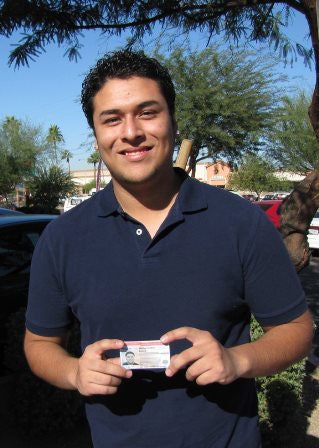 The Deferred Action for Childhood Arrivals (DACA) immigration directive has extended opportunities for young immigrants.
The Deferred Action for Childhood Arrivals (DACA) immigration directive has extended opportunities for young immigrants.It’s been one year since the Obama administration enacted the Deferred Action for Childhood Arrivals (DACA) immigration directive. The measure, which took effect August 15, 2012, has provided work authorization and a temporary reprieve from deportation for more than 400,000 immigrant youths who have qualified under DACA guidelines.
An analysis by the Migration Policy Institute’s National Center on Immigrant Integration Policy has found that 49 percent of those currently eligible to apply have done so. Between August 15, 2012, and June 30, 2013, 400,562 of 537,662 applicants met DACA approval, according to the Migration Policy Institute (MPI) analysis. The U.S. Citizenship and Immigration Services (USCIS) agency has denied DACA approval to one percent of applicants, or 5,383, with the rest, or 24 percent, awaiting a decision.
In “Deferred Action for Childhood Arrivals at the One-Year Mark: A Profile of Currently Eligible Youth and Applicants,” MPI researchers write that DACA recipients are now benefiting from having access to driver’s licenses in all states except Arizona and Nebraska, lower college tuition in a number of states and a wider range of jobs and educational opportunities. DACA provides immigrant youths who were brought to the U.S. as minors a renewable, two-year reprieve from deportation.
“For some youth, immediate financial needs will likely tip the scale in favor of leaving school to pursue employment while others may find that DACA provides the motivation to enroll in higher education and complete a degree,” the MPI analysis states. “Either way, DACA is likely to substantially increase the economic mobility of a sizable number of immigrant youth: more than 400,000 on the program’s first anniversary.”
The MPI analysis provides a detailed look at the current and prospective DACA population by educational attainment, English proficiency, state of residence, country of origin, age, gender, labor force participation, poverty and parental status.
The MPI estimates that as many as 1.9 million undocumented immigrants under the age of 31 are potentially eligible for DACA, including 1.09 million who currently meet age, education, residency duration and other requirements. Those meeting DACA eligibility have been undocumented immigrants who entered the United States before the age of 16 and were under the age of 31 as of June 15, 2012. In addition, they have continuously resided in the U.S. without legal status since
June 15, 2007.
“The context here as DACA hits the one-year mark is that Congress is debating comprehensive immigration reform and the DREAM Act is very much a part of that discussion,” said Dr. Michael Fix, the co-director of MPI’s National Center on Immigrant Integration Policy. “It’s definitely part of the Senate bill which has been put forward.”
The analysis reported pronounced differences in application rates by state. North Carolina proved to have the highest uptake rate, with an estimated 74 percent of its eligible youth population applying, while New York and Florida are significantly lower at 34 percent and 35 percent, respectively. California and Texas, which together accounted for 45 percent of all applications accepted by USCIS, are closer to the national average, with 49 percent and 54 percent, respectively, of eligible youths applying.
In a web broadcast discussion Wednesday, Fix and MPI researchers devoted much of their attention to discussing the barriers now preventing an estimated 423,000 undocumented youths who need only to enroll in an educational program to be eligible to apply for DACA protection. These are individuals who meet age and other DACA criteria but currently are ineligible because they are not enrolled in school and do not have a high school diploma or its equivalent.
Sarah Hooker, an MPI policy analyst, said the analysis showed that this population confronts a number of barriers to meeting DACA’s requirements. In addition to lower educational attainment, these immigrants have lower English proficiency and lower incomes than their peers who are now protected by DACA, and they are more likely to have work and parenting responsibilities. Expanding the availability of adult education, literacy and workforce programs would be important to maximizing DACA participation, particularly for those who are now parents, according to Hooker.
“This group is particularly significant because they have the potential to affect not only their own futures but also the outcomes of the next generation,” Hooker said. “The vast majority of their children, one would assume, would be U.S.-born citizens.”



















